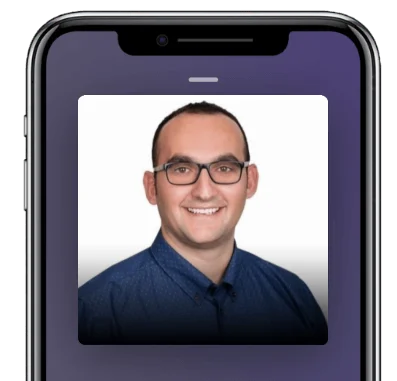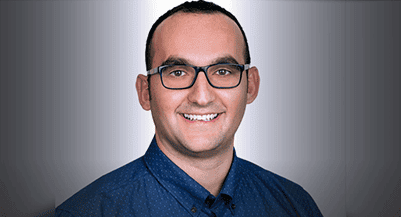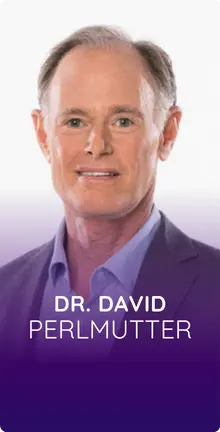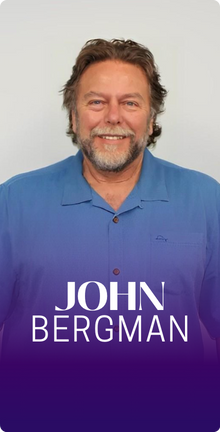In this Episode
- [00:39]Stephan introduces Uran Berisha, a medical pioneer whose mission is to help one million people reduce pain by 75% before December 31st, 2022.
- [06:31]Dr. Berisha explains the local and global effect of scars on our body especially from surgery.
- [12:10]Stephan asks Dr. Berisha if his big scar from appendectomy caused shin splints every time he was running track in high school.
- [18:53]What are the different types of shockwave therapy devices?
- [23:20]Dr. Berisha talks about how they help people search for clinics that have shockwave therapy.
- [31:38]Stephan asks Dr. Berisha if his scar at the back of his head from the hair transplant is related, causing him to carry his head forward.
- [36:42]Dr. Berisha differentiates the effects of using lasers and True Shockwave therapy in treating scars.
- [43:48]Dr. Berisha discusses the cause of carpal tunnel and their clinic’s approach in treating it.
- [47:58]Can shockwave therapy help the symptoms of Alzheimer’s?
- [50:42]Dr. Berisha shows examples of the sounds of the different shockwave devices.
- [51:29]Visit Dr. Uran Berisha’s clinic website, unpainclinic.com, to learn more about True Shockwave therapy.
Uran, it’s great to have you on the show.
Thank you very much, Stephan. It’s a pleasure.
So we met through Genius Network, a mastermind that we’re both in, and it’s a great group of people. I was impressed with just the knowledge bombs you shared in the breakout room at one of the recent Genius Network meetings–on virtual meetings, because of COVID, we’re not meeting in person. But I was so grateful to have been matched up with you so that you could share those wonderful tips. Because we have a new baby and my wife went through a C-section, and you shared some incredible stuff about what women need to know about recovering from a C-section, even if it was one two or three years ago. And maybe we should just start there because that is how we started our conversation going down the health and wellness rabbit hole. So what is it about a C-section that women need to know, to heal after the fact even if it looks like it’s fully healed a year later?
I’m just gonna go a little bit back because it’s true what you said when I mention shockwave, the first reaction of people when they ask, “What do you do?” I do shockwave therapy, and they think it’s the shockwave for the head, the electric shock. We’re talking about actual shockwaves, the sound waves, and how they use it for regeneration. It’s one of the most effective therapies in medicine for the regeneration of pretty much any tissue from the skin to the bone. And then the second shock, even with my clients, and even on the Genius Network meeting, is when I tell people that scars are one of the reasons why you might have a chronic musculoskeletal dysfunction, and you keep going and seeing all kinds of practitioners for lower back pain, neck pain, even carpal tunnel that is like way far from the core. And nobody knows that it actually might stem from that abdominal surgery. And C-section, it’s a very common one.
The nervous system is affecting your body from a software perspective. If it's not getting the correct information, it's not going to respond correctly. Share on XWith any surgery that is done in the world, specifically C-sections, it’s necessary. It’s an emergency, so it’s saving mom and baby. But nobody thinks about the aftermath of that surgery. When I compare the scar from the past to today, old scars used to be like you can see the keloid. The whole medicine has been focused on the aesthetic aspect of the scars, but not much on what it is doing to the underlying structures. And the reason why c sections or any surgery is very important is to imagine your skin. It’s your outer brain layer. So your brain or your nervous system gets information from the skin or proprioception then gets information from the vestibular system or the visual system. So just a couple of examples, visual systems if you see a car coming towards you, you’re going to contract your muscles to avoid the car hitting you. The second one if you hear a boom now, you’re going to again contract your muscles and go in protection mode. And then the third thing is the touch, an example for that is let’s say you have a hot stove and the stove is very hot, but you don’t see it, you don’t hear it. And if you don’t have a proper feeling in your fingers or your skin, then you might burn your hand. But if your skin can feel that heat, you’re going to contract the muscles and remove the hand.
Shockwave Therapy is one of the most effective treatments for tissue regeneration from the skin to the bone.
So why again the C section affects the body is that the moment that the skin is cut, there’s a nerve ending damage that happens in that area. So your nervous system is not getting proper information from that side. So it doesn’t know how to use the core muscles, how to respond to those stimuli from that area. And then what it does is start moving or finding synergist muscles, muscles that do the same motion, and start using hip flexors, and then the neck flexors. And that’s where we say the nervous system is affecting your body from the software perspective. So it’s not getting proper information, and that it’s not responding properly. The second effect that you get from any surgery, and specifically again, C sections, is that physically the tissue is cut. So when the tissue is cut, the body’s gonna start building scar tissue adhesions, and then it starts pulling towards that area. So it affects the pelvic floor muscles, it affects your posture, you go more in a slouch position. And then it doesn’t matter what you do with those muscles until you treat that scar.
From the software perspective and the hardware perspective, there is not going to be a relief in the body. And scars can have a local effect or global effect. So the global effect is like if we look from traditional Chinese medicine, you can have a meridian that flows through that area. And due to the scar, there’s no energy flow. So it can affect the person in the physical aspect, and emotional aspect as well, because no surgery is easy, specifically the C sections, they’re very stressful. Your nervous system will relate that scar to emotional trauma. Therefore, it’s extremely important to treat any scar regardless of how long it’s been on you.
Wow, that was an epiphany when I first heard it. And so I made sure that my wife, Orion, heard that, and she’s very grateful to have heard that and that there is a solution. That shockwave therapy is a way to heal this without having to continuously massage the scar or do other kinds of treatments to just address the symptom without addressing the core issue. Essentially, what you’re saying is that the scar disrupted the communication network at the skin level layer so that that kind of mesh network isn’t communicating well anymore, or it’s just kind of cut off from the network. And thus, your body is compensating, not using your core muscles, even though they’re functional after you’ve healed from the surgery, but you still have the scar. And the body is saying, “Yeah, I’m not sure that I can still use this muscle.” Is that essentially a good paraphrasing?
Scars are one of the reasons why you have been experiencing chronic musculoskeletal dysfunction.
Imagine this, the skin is just the outer layer but there’s the sensory layer. That’s where you have the sensor underneath the skin. Now you have again the nerve endings, the fascia. The fascia is a layer that pretty much covers everything in the body. Recently, I would say about the last five, six years, that medicine tries to understand fascia. If we look at it internally, now you have a skin outside, and then you almost have another skin that goes on top of the muscle and the fall shot, imagine it’s almost like an optic fiber. So it’s the layer that transmits information. On surgeries, the fascia gets damaged. What happens is your nervous system has lost communication, but that site in the meantime, it has figured out what we call an alternative pattern, but this pattern is dysfunctional. What happened is your body doesn’t like change. The nervous system brain doesn’t like change. It likes to learn one thing to be able to function effectively and efficiently. It just wants to repeat that thing. So after a while, those fibers heal, let’s say after like five, six months, a year, or there’s a time that they never heal. But now, the nervous system doesn’t want to change the pattern that it has learned, so it always goes back to the default.
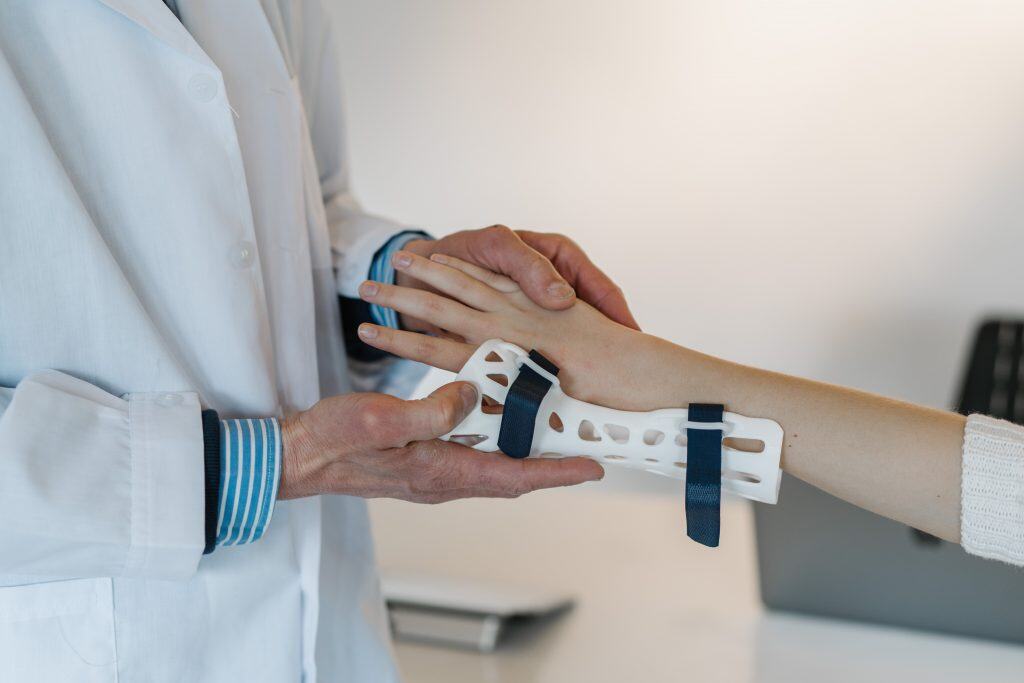
If you are under an adrenaline rush, your body is going to go and use everything. But if you’re just in normal circumstances, let’s say you’re doing abdominal muscle workouts, and you do like 100 of them, but you don’t feel the pressure on your abdominal muscles, you feel it more on your neck, you get sore from it, that’s the sign that your core muscles are not functional. So your nervous system is not prioritizing them, it’s not picking them up as the first resorts, it’s bypassing them. So if you go and measure them with EMG sensors, there is a connection. The muscle communicates. It contracts. But it doesn’t get picked from the nervous system as the first source as it should be. And I have a theory that anytime when you have a big muscle dysfunction, then the small muscles actually will suffer. For example, is again, since we took c section or appendectomies, the core muscles become dysfunctional, now extremities suffer. If you’re a runner, you’re going for a jog now. This scar, it’s affecting neurologically. It’s shutting down the core glute muscles. So your body automatically is moving, or it’s overusing the hamstrings, the calves. Then the runner comes into the clinic and says, “I have Plantar Fasciitis, I have an Achilles’ Tendon,” But you cannot have a tendon problem before you have a muscle problem. The muscle first becomes dysfunctional, and then it moves like all that impact to the tendon, and therefore now people get diagnosed with chronic tendinitis. You keep treating the tendinitis without actually treating the cause in the first place.
Gotcha. Well, I had an appendectomy. I had my appendix removed when I was, and I don’t know, like five or six years old. And back then, it was a big scar, right? A big cut. Not like these days where it’s a tiny incision, and they use the laparoscope, or whatever did to get in there. Very more precise these days than back then. I was a runner in high school and did track cross country and that sort of thing, so when I would get things like shin splints, is that partially because of the scar that I had?
When you have a big muscle dysfunction, then the small muscles actually will suffer.
Yes. Because of what happened, and again, I never assessed you. This is the first time that we’re talking about this, but I assume, and I’m pretty sure, that probably your shin splint was more on the right side. And what happens is like if you would feel the shin splint pain, you probably have it more on the right because you have muscle dysfunction, you have a pulling coming on the right side on the hip, that it disengages quadriceps muscles. So even though you were a runner, your quadriceps muscles aren’t functioning properly, and therefore your body had to move all the impact of the tibialis anterior, which is the next muscle, and then that muscle gets so overworked. To some runners actually, it is also called stress fractures. And again, if you would be in my clinic, we would start with a shockwave, and the main reason why shockwave works for resetting the scars because it’s a pure sound wave and it produces a significant amount of power of mechanical pressure. So the stimulation is strong enough to influence the changes from the periphery, what we call it from the skin to the nervous system.
Right. And so the shockwave therapy is done on the scar, not on let’s say the shin splints or the stress fact fractures, or maybe it’s also done there, but the main issue that needs to be addressed, the core kind of underlying issue, is healing that scar and the fascia underneath it.
I’m going to talk a little bit about the shockwave, and then I’ll get to the point of actually explaining what I would do in your case or how I would treat you.
Okay.
Shockwave Therapy is inducing a biological response in the body. It’s not just that mechanical force. It’s these pure sound waves, it’s not ultrasound, it’s not radio frequency, it’s not electric shock.Dr. Uran Berisha
The shockwave therapy uses pure sound waves. So it’s the same technology as to break up kidney stones with. But orthopedic surgeons in the 80s took this idea from a urologist, thinking where they can break down the kidney stone with shockwave, we can probably break down the calcium build-up on the shoulder with the shockwave. And then they did a couple of treatments, and they realized they couldn’t break down the calcium build-up on the shoulder. But what happens later is the body dissolves the excessive calcium build-up on the shoulder joint. That’s when they realize that actually shockwave therapy is stimulating or it’s inducing a biological response in the body. It’s not just that mechanical force. So it’s these pure sound waves, it’s not ultrasound, it’s not radio frequency, it’s not electric shock. It’s a specific category of sound waves that is characterized by a very high amplitude of mechanical power. So it’s about 3000 times stronger than ultrasound, but it’s almost a million times slower than ultrasound that you get from the fascia. One shockwave only lasts about 0.20 to about 0.60 nanoseconds, so it’s extremely short. So this vibration travels through the tissue, and in the case of the scars, as soon as that mechanical force hits the skin, now the nervous system, it’s like thinking, “What hit me? What is this power that is hitting me?”
So it forces the nervous system to communicate with that spot, which brings back the pattern that always used to be there. So that’s the first kind of update or software update that it does. And then, as that mechanical power travels through the tissues deep, it creates what we call cell cavitation. It doesn’t burn the cell, it doesn’t kill the cell, but it taps the cell. When it taps the cell, it causes biological stimulation. It creates a kind of fault injury in the body. Now the nervous system thinks, “Oh, my god, I have an injury internally, so I have to mobilize all the cells to repair that injury.” And what it does, it brings pretty much all the growth factors. It decreases inflammation in the area. At the same time, it brings the inflammatory cells to repair whatever it invaded us. It helps release nitrous oxide, increased pain, and all those processes, they stimulate angiogenesis, which is a new blood vessel growth, and they trigger stem cell activation. So it triggers your stem cells to come and repair whatever is injured.
If there's no cognitive recognition from the nervous system, the cell doesn't know what to do. It's like you're asking a repairman to fix something, but you don't provide a plan and say, 'Just build something.' Share on XIn your example, what I would typically treat you is, yes, we go and treat that appendectomy scar to reset the muscle function first. And then we go and treat the shin area to deal with the consequences of your dysfunction that you had before. Because when compensation is for a very long time in the human body, even though it’s a symptom, it becomes its own independent condition. So then we will treat the muscle to relax it with shockwaves. The beauty of the ability of the shockwave is that we can reach up to 13 centimeters in the body without any side effects. It goes pretty much beyond any other modality that it’s able to go that deep to break down scar tissue adhesions or create optimal conditions for healing. It physically relaxes the muscles. And then, on top of that, it stimulates the regeneration of that area. And people typically need only three sessions, once a week or about a minimum of three days, maximum 15 days. And then, after that, they allow the body to heal for about four to six weeks. There’s no downtime, and they can still do anything that helps them. If they want to combine it with massage, acupuncture, or any other modalities, it’s totally fine.
Gotcha. Now, there are different types of shockwave therapy devices, right? There’s the kind that works on scars, and then there’s the kind that doesn’t work, and the kind that doesn’t work is the radial shockwave devices. Can you explain this further?
When pain lasts for a very long time in the human body, it becomes an independent condition even though it’s a symptom.
Yeah. I love this question already because, in the world, shockwave therapy has been misunderstood. Actually, at my clinic, at Unpain Clinic, we call it true shockwave because true shockwaves or extracorporeal shockwave therapies are the ones that sound the same as the one that is used for kidney stones, and this is the proper shockwave. In 1999, there was a Swiss company that made radial pressure wave devices. It sounds like a jackhammer, they brand it as a shockwave, and then they start promoting. In the world now, you have more radial pressure wave devices known as a shockwave. And the actual true shockwave device is known very little. So my suggestion for anybody that needs this treatment is, I say if it sounds like a jackhammer, that’s not the true shockwave. The true shockwave makes much less sound, you don’t feel any pounding on the skin, but it just delivers a pure sound wave. If you combine those two, you get amazing results, nothing wrong with it. But for the scar treatment, you must look for an electrohydraulic shockwave or electromagnetic shockwave.
Three types of generators create true shockwaves: electrohydraulic, electromagnetic, and piezoelectric. The piezoelectric system is used mostly by orthopedic surgeons, so it’s extremely precise; it’s like the focal point; it’s like one millimeter. For scar treatment, it will not be ideal. For scar treatment, what I use, personally what I prefer is an electrohydraulic system because the focal point is much wider. So the more you hit the skin with the stimuli, the better effect and response you’re going to get in terms of muscle function. But real pressure waves, it’s still amazing for, like, relaxing the muscles and scar tissue adhesion. In your case, I would go with an electrohydraulic to treat the scar, and then I would go and relax the shin with a radial pressure wave. So that would be an amazing combination. But yeah, anytime when somebody is looking for shockwave therapy or true shockwave therapy, regardless of your need, you have to look for electrohydraulic or electromagnetic shockwaves.
Got it. And how do you find a practitioner who has the right kind of device? Because a lot of times, they’ll be radio shockwave devices, the wrong kind for treating scars, and they’re not gonna use that full term. Regardless of whether it’s the piezoelectric or the electrohydraulic or electromagnetic, you’re probably not gonna find those on Google search, right?
When looking for a proper Shockwave Therapy, ought for electrohydraulic or electromagnetic shockwaves regardless of your needs.
Yeah, the first thing, probably just Google it that way, and then something will come up, but I’ll give you some tips on what you have to look for, kind of the names that the people or the industry uses. So look for Focal Shockwave, so that’s actually from a German company store. So they call it Focal Shockwave. For electrohydraulic systems in the United States, it’s a SoftWave. That’s one name that they can look at. The devices look different, so if you look at the device, you’ll see there’s a big sound, almost like a jackhammer, and a small metallic applicator on the top. So those are kind of the distinguishing features, and probably again, just like research their website, call the clinic and ask, “Do you use radial pressure wave or do you use true shockwaves or electrohydraulic and electromagnetic?” The clinics that used those, because they want to distinguish themselves and that they’re using the right tool, they usually have it on their website mentioning it.
Got it. Is it easier to find the true shockwave in the States? Or is it just as easy to find internationally?
In the United States specifically, it’s been just recently that true shockwaves have become available. I will say the last couple of years in Europe they’re very common, even in Asia like around the world. But yeah, if you go with those names, searching specifically Focal Shockwave and then those brands, you’ll be able to find them pretty easily. So I don’t see any problem with that. I’m not sure if they can contact us directly at the clinic, and then we’ll help them find where people are, so that’s no problem. And we do that, and we do that constantly.
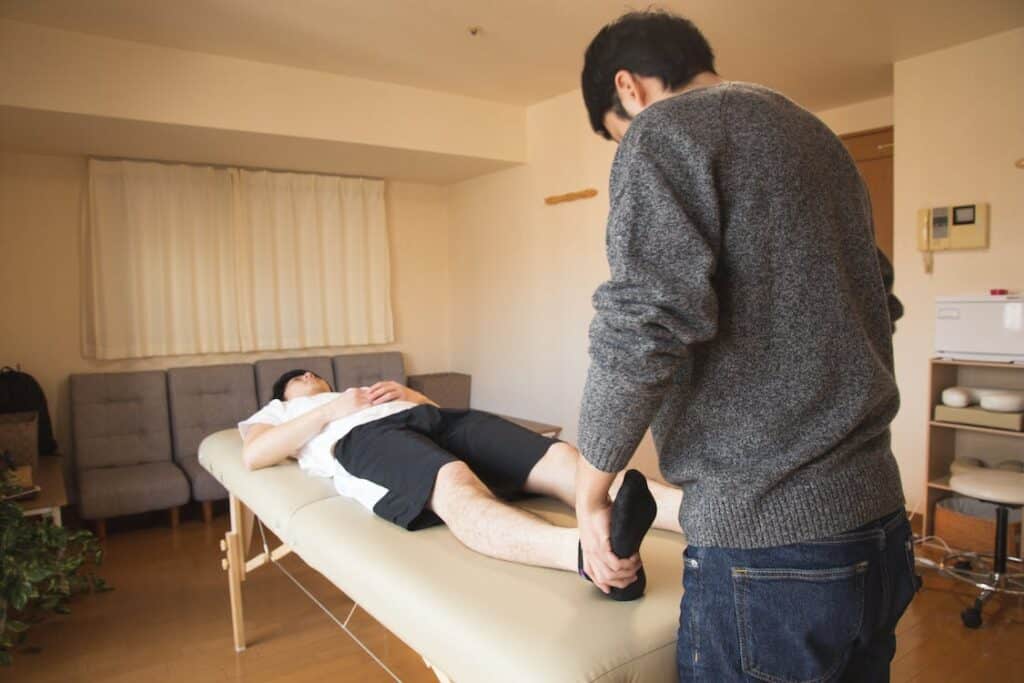
That’s very nice of you. Let me direct you to XYZ competitor in Orlando, Florida near you, or whatever. That’s pretty cool.
We don’t look at anybody as a competition. It’s interesting. We just want this therapy to be available for people. There are more than enough people that need this in the world. So we just want to help. We use to check clinics. I have a lot of clients during the winter, they go south because we’re located in Edmonton, Alberta, so it gets very cold here. So they go south, they get injured playing golf, and then they look for something around. We now started actually searching clinics, kind of taking them through survey questions or just to help that person. So we already have an idea based on the location, who could be the right person. And my staff already knows that, so no problem at all.
If you want to know how important breathing and oxygenation are, try not to breathe for five minutes and see what happens to your body.
So I already told you this, but it wasn’t on this episode, it was in a private conversation, but I’m gonna share this for our listeners. I had a hair transplant back a decade ago now, which was amazing, life-changing because I look completely different than I did before. Of course, the kind that I had back then was where they leave a scar in the back of your head because they take a strip of skin, about an inch thick, and they remove it, and they take each hair follicle out of the skin. So you back up without that skin, so they kind of stretch the skin to pull it together. And it’s very tight back there until it kind of loosens up. But yeah, I have a scar that’s covered by my hair. And I never thought a second thing about it until we talked, and then I’m like, Oh, what are the implications? How is this showing up in my life in terms of dysfunction, or pain or whatever or tightness because I have this scar?
Honestly, that could affect in so many ways and aspects. We already talked about how the scars affect the body in general, from the muscle perspective, especially when it’s on the head, on the cranium. It tightens up the cranial fascias. It puts more pressure on your head than normally you should have. And we have the sutures on the head, the bones that move, almost like every time when we take a deep breath, your head expands a little bit. So we have almost like a diaphragm on the head, then we have a diaphragm in the abdomen, and then we have it on the pelvic floor. So those three diaphragms are extremely important for proper oxygenation of the body. And I tell everybody if you want to know how important breathing and oxygenation is, don’t breathe for five minutes and see what happens to the body. So that’s why it’s like it’s extremely important.
We adapt to so many dysfunctions, and it becomes normal to us. Until we get treated, and we don’t realize how much it has affected our body.
Even for you, Stephan, whenever you have the chance, you like to get the treatment in those areas to physically relax the scar. Because that could be a trigger, I’m not sure if you get any headache or not. But it could be related to headaches, and it could be related to lack of focus, feeling almost like a curtain in front of your eyes. The reason why is because we have the suboccipital muscles on the back that control your head position. The whole body is trying to keep the head straight. Now, when you have that physical cut of those structures on the head, it starts putting a lot of pressure on the C1, C2. And that interrupts the cerebral spinal fluid flow to the head and brain. At this point, what you can start doing, every time if you’re listening to a podcast or you’re reading, you can hold up the book with one hand and try to massage your head. Try to pull a little bit the hairs up, that way, you create or you release those fascias restrictions, so your lymphatic system or lymph flow can actually start entering those channels, and it almost like start lubricating the tissue. Whenever you have the chance, shockwave is very low intensity to treat all those areas. It’s interesting because we adapt to so many dysfunctions, and it becomes normal to us. Until you get treated, you don’t know, and you don’t realize how much it was affecting.
I’m going to share a personal story with you. When I was five years old, I had hernia surgery myself. As a teenager, and growing up as a young kid, I was a competing cyclist and a swimmer. But I always had a big belly, I could never understand why I was so built the rest of my body, but I had a belly, and I learned neurokinetic therapy, how the scars affect the body, the motor function. And that’s when I realized, like, Whoa, my core muscles, and they never worked properly. And the way how they were told to treat the typical like resetting the scars is like massaging and doing all kinds of stuff just to send signals. I said to myself, wow, I can do this in a matter of seconds with shockwave. I treated my scar, and a couple of weeks later, people told me, “Oh, you lost weight.” No, I didn’t lose any weight. It’s just that my muscles are engaged. Now everybody knows if they come to our clinic for treatments, the first thing that we do is we treat the scars, we clear that, and then we work on anything else. And the good thing is that that’s a permanent improvement. If you do two or three sessions, you never have to go and treat that area again if you use the shockwave.
Scars are one of the reasons you might have chronic musculoskeletal dysfunction. A past surgery may be the reason for your back or neck pain and it's not entirely treated because you haven't focused on its core. Share on XSo are you ripped now in your abdominal area? You have like a six-pack?
I have two packs. And I tease my wife, I say, “You know what, the other four, I’m just gonna order them online. “
I don’t think it works that way.
I know, it’s one thing actually, Stephan. I pay attention or focus, and I advise every client, is you have to always think about balance. So if you feel good, if you feel healthy, if you’re able to do things, that’s what your goal should be. Because sometimes even just focusing on building the muscle, putting that much effort on the body, if you’re already a stressful person, you’re causing a lot of stress. And now you’re asking your body to, let’s say, let’s do a marathon, you’re putting again your nervous system in stress. Because I work in the clinic, three days a week, nine to six, I spent a lot of time indoors. So what I do is I try to go more cycling, I try to spend more time outside so that way it balances out. Plus, I do every morning I have my workout routine, but it’s not intense.
Always think about balance. If you feel good, if you feel healthy, if you’re able to do things, that’s what your goal should be.Dr. Uran Berisha
Okay, so back to my issue, I’m just gonna go back for just a minute or two to this issue of the scar on the back of my head. So would that show up, perhaps as me carrying my head forward because I’ve always heard that, “I carry my head forward because I use my computer a lot.” If you’re at your computer for many hours in the day, it’s pretty common to have a forward head sort of issue. So I’m curious if that’s potentially related. And the other thing is I have a lot of tension and tightness in my traps, in my shoulders and neck. And so I’m guessing that’s probably related as well.
Exactly. So that there are two things here. See human bodies designed, let’s say, if the body is functioning a hundred percent, you can pretty much do anything with your body, and it should not hurt. We’re not the static system. We are a dynamic system. Muscles contract relaxed. Yes, you’re gonna adopt more to the activity that you do, whether it’s like a sport or just sitting on the desk, but it’s not the main reason that you have a head forward posture. To me, where I think it’s coming from your appendectomy first because your core muscles are not functional. You’re overusing your hip flexors, which is pulling your spine a little bit forward. Your neck flexors have become your primary movers for the core area of what we call the frontal chain. Now your upper trunk muscles, your head, it’s not being supported by the flexors anymore because they’re almost doing completely different things. Now your head, it’s only held against gravity by the upper trapezius muscles and the neck extensors. So that’s why they’re getting super tight, but then with a fascia being pulled from the hair transplant and all that intervention, that’s now affecting where the upper trapezius muscles attach, which we call it the ligamentum nuchae just behind your head there.
If you want to help yourself from the pain, put a Kinesio Tape on your scar to decrease the muscle tension until you can treat yourself permanently.
If that gets super tight, it doesn’t matter how many stretches you do, and it doesn’t matter what exercise you do to correct it, it will not correct. The reason why I say this is because let’s say now you get the postural exercises to do. You’re giving your nervous system a task to correct this posture, those muscles, guess what, your nervous system is only going to pick the muscles that are already working because you’re challenging it. So, where that tension goes, it goes more to the upper trapezius muscles. And then now you have so much pain and tightness on the upper trapezius muscles, you go and seek help, you go and see massage therapists, they dig in with elbows trying to loosen up the muscle, but your nervous system, it’s overusing that, and there’s no way that you can relax that muscle with muscles. And when I say that is because the therapist’s hands are muscles. So now you’re almost causing friction between two muscles. So you get the temporary relief, but there’s never a permanent improvement. So you go back to the scar if let’s say due to the COVID now, like so many things are restricted, if you want to help yourself just temporarily until you have the ability to treat yourself, take a Kinesio tape, put it on that appendectomy scar when you go for a run when you do activities, or you know yourself that you’re going to be sitting in front of all those meetings, that could be a tip that could decrease the upper trapezius muscle tension. I’m not against exercise. Everything in medicine that we do in rehab medicine, it’s actually to bring the human back to the perfect motion. So you must do the exercise. But first, you eliminate this function then do whatever you want with your body.

Okay, wow. So stretching won’t correct it. It’s going to need to be addressed at the core level at the root level with the true Shockwave treatment. What if you don’t do the shockwave treatment? Okay, so you mentioned kinesiology tape could be a way to just give it a little bit of help, but what are some of the other ways that you might address it?
Yeah, if you cannot find true shockwave, then go and get lasers. Even if you massage it yourself, like touching it, it might take months before it resets. Because touching, it’s a very low stimulus. You can go and get acupuncture. There’s some acupuncturist that works with needles. They needle the scar so that way it physically releases the scar. And as the needle that actually creates mechanical stimuli on the nerve ending and sometimes the nervous system picks that up.
Okay, are you a fan of laser therapy, or you just think this is a less than ideal scenario if you just don’t have shockwave therapy available to you.
From an aesthetic standpoint, it could be helpful to use a laser to remove a pronounced scar, but you should also use Shockwave Therapy on it.
Honestly, the reason why shockwave is considered, especially from my perspective, when it comes to like all modalities, it’s pretty much the top one because it’s causing physical stimuli as you feel it when it goes through the tissue from the body. You feel the impact of vibration versus a laser; it’s just a light. So for the laser to turn to mechanotransduction, like to be able to physically stimulate the cells, you have to increase the intensity, it releases the heat, there’s potential damage from it so that there are so many things. Therefore, for the scar, like lasers physically, aesthetically, they can make the scar look much prettier because the heat releases the collagen fibers and stimulates collagen production, and it changes that way. But not in terms of the stimulation because it’s light. So we rather use a sound actually because sound, you feel it. For example, you can go outside, you see the light, the sunshine, you feel the heat, but you cannot feel it physically as same as if you’re close to a speaker. That’s pretty much the difference.
Got it. Okay. So from an aesthetic standpoint, it could be helpful to use the laser to make a pronounced scar that’s very obvious that people can see. Like if you’re wearing your bathing suit, and people can see that from very far away, you might want to try using a laser on it, but you also should use shockwave therapy on it.
Yes.
Okay. So I’m curious if someone has neuropathy as I have in my left index finger. They call it Morton’s neuroma, just kind of a catchall for anything that they can’t see on the MRI that is nerve pain, its nerve damage. I don’t know how it happened, but it was like five years ago, and every time I bump this finger near the tip on the inside, it just feels like a hammer was taken to it. It’s awful. And I kind of resigned myself to having to live with it the rest of my life. Is shockwave a potential treatment for that?
Yes. So anytime when the nerve gets interrupted, because of Morton’s neuroma, it’s pretty much a scar tissue build-up, that it’s almost like bundling the nerves. So however that happened, you don’t know it could have been, you had your hand somewhere that caused a little bit small injury on your hand there. The hand is very sophisticated, specifically for fine movements. So even a little injury in that area can be very sensitive to scar creation and adhesions. And then imagine a very small scar on the hand is a lot versus on a hamstring or the thigh area. So now the nerve can be hypersensitive or hypo sensitive. So in your case, it’s hyper. So it has become very sensitive. Shockwave, it would help more than anything.
Treat the scar first. Regardless of where the injury is, that should be the foundation.
I’m talking about my experience. We regularly treat Morton’s neuromas on the feet. And that’s a fact. It doesn’t matter how long it’s been. It’s a minimum of 70% and up, and that’s within three sessions. The reason is that it actually breaks down scar tissue adhesions on that area and then stimulates angiogenesis, which is a new blood vessel growth. So then your body starts dissolving that scar, and then about four to six weeks later, after a shockwave application in that era, you’re going to have 200-300% more blood circulation. And then, about eight to nine weeks later, you’re going to have the stem cells that come in to repair whatever it’s injured. So yeah, definitely whenever you have the first chance to get it treated, I would highly recommend it.
Wow. That’s exciting because I’ve tried lasers, I’ve tried stem cell therapy directly injected into that site, it didn’t help, neither one.
I want to add a point here. Anytime when you do injections, and you’re asking the body to what I call it is like helicoptering the cells. You’re moving the cells from one side to the side where you think you have potentially a problem and injury. My suggestion of how I would typically treat you: I would go and treat your scar first. We talked about appendectomy, the cranial scar because you had appendectomy way before anything else. So we bring the muscle function back, so your core starts functioning, and it offloads your extremities. So regardless of where the injury is, that’s the foundation. And then when we would go and treat your Morton’s neuroma on the finger because the shockwave has the ability to gain mechanical power in that area. It breaks down the scar tissue adhesions, which creates optimal conditions. It cleans the area and prepares the area for healing or for those cells to come. And because we have caused kind of a false injury, so your nervous system is triggered.
Shockwave therapy is one of the most effective treatments in medicine for the regeneration of pretty much any tissue from skin to bone. Share on XNow you have the nervous system controlled that it’s dictating the healing, and it has stimulated the healing. And not just like bringing cells from another body part and now what the cell is going to do, if you didn’t trigger or stimulate? Or what we say if there’s no cognitive recognition from the nervous system, the cell doesn’t know what to do, it’s almost like you’re bringing a construction guy to repair something, but you don’t provide a plan, you don’t provide the place or nothing and just say, “Just build something.” “What am I going to build?” Because of those stem cells, they have the ability to turn to whatever tissue or form it needs to be. And that decision is made in the nervous system because now the nervous system has been stimulated. So if you actually have shockwave first, and then you do the stem cell, you would have amazing results. Because you already triggered the stimulation, now you can overpopulate, and chances are much higher, same as with PRP or prolotherapy or any other form. So shockwave doesn’t interfere with anything else. It can just help and benefit the area.
Wow, that’s good to know. This is enlightening. What about the carpal tunnel? Like so many people suffer from carpal tunnel or just from wrist pain or hand pain because they’re on their computers all the time, especially now with us not being able to get out as much. Many of us under lockdown or our movements are restricted, we’re not able to go to the gym. So we’re sitting at the computer, we’re sitting on our phones, we’re typing away all day long, getting inflammation and getting carpal tunnel. So how do you prevent this? How do you address it once you’ve got it? And I know shockwave is not gonna be a key answer to that question.
Everything starts from the emotional aspect. Any disease, any problem in the body begins there.
The first thing with any condition because I don’t like to tie myself to names because we cannot treat the name. We cannot treat the diagnosis. So even with a carpal tunnel, the way I would suggest to approach is first trying to understand what’s going on with that body in general. Because as I said earlier, you’re designed to do anything with your body once everything functions properly. With the carpal tunnel, we make sure that there’s no surgery in the body; we clear that. The second thing then we go and look at is how your shoulder is functioning. Because if you’re sitting at the computer all day, that usually doesn’t hurt you much. What hurts you more than that is, let’s say you have a pinched nerve on the neck that it’s affecting your deltoid muscle. The deltoid muscle is this powerhouse muscle, the biggest muscle that moves your shoulder, lifts your groceries like you do everything with it. If you have a dysfunction on the shoulder now, and what your body is going to do is going to look, “Okay, I’m holding this like a 10-pound grocery bag, and I need to like carry from the store to my car,” the deltoid muscle is not working properly, what muscles are gonna hold that and carry that. It’s usually the forearm muscles because we touch. Our hand takes more space in the brain from the sensory input than anything else. So now they take over.
What that means is that you’re overusing those muscles on your workouts and daily activities and all that. So that’s where the tension is created. When we talked earlier, if you have a tendon problem, you first have muscle dysfunction. So your focus should be strengthening rehabbing the shoulder muscles. So then it offloads the overload on what we call the forearm flexors. Because with carpal tunnel syndrome, what happens is those tendons of the forearm flexor group as they pass through the hand, there is a layer that covers it, it’s called the retinaculum. Due to the thickening of the tendon and the thickening of that retinaculum, it compresses the nerve and the blood circulation, and therefore then you start having the symptoms of carpal tunnel. So my approach is, the first thing is you can massage your muscle that moves your thumb, the thinner muscle, try to loosen that up. Use heat actually on the forearm flexors. And then go and do some strengthening exercises, but very easy, lightweight. And I say if you want to reset the pattern of a muscle, you cannot go and challenge the muscle. You have to go like baby steps. You have to learn the alphabet first, and then you can add to that muscle later on. So then you strengthen the muscles of the deltoid of the shoulder, you make sure that your scapula is actually in the proper position. And you’ll see that automatically your carpal tunnel will start feeling better. In chronic cases, that carpal tunnel has been for 10-20 years, we still approach it the same, but then you might need more like the shockwave or anything that would relax that local tension.

Got it. Okay, now, I know we’re almost out of time here. Alzheimer’s, big question here, so let’s answer it briefly kind of a lightning round here. So Alzheimer’s, what can we do if a loved one is starting to show signs of dementia? It seems like there’s no way to help them but is shockwave a potential amelioration of Alzheimer’s?
Last year for the first time actually, shockwave therapy got C approval for Alzheimer’s treatments. This is in Europe. Shockwave it’s used pretty much for heart regeneration for musculoskeletal regeneration, everything pretty much in between skin and bone. For men’s health, erectile dysfunction, because again, stimulates new blood vessel growth, it improves that. And then now for Alzheimer’s treatments. Locally, it’s stimulating the brain and increasing the blood circulation in that area. It doesn’t cure it, though, it doesn’t cure Alzheimer’s, but it helps the symptoms of Alzheimer’s for at least four to six months. This is what we have learned about spinal cord injuries. It’s almost like a standard application and most of the hospitals in Europe.
But one thing that I would kind of hierarchy of the way how the body functions, and when it comes to Alzheimer’s, it’s hard to kind of respect that, but you have to follow it. So everything starts from the emotional aspect. Like any disease, any problem in the body starts there. It affects the lymph system. So the lymph system, it’s our sewage system, it doesn’t matter what color you have, what engine you have if you clog that exhaust and the engine don’t work. So you have to maintain a proper lymphatic system. If the lymph system is not working properly, it affects the gut, so that is going to affect your nutrition. And then we go to the gut and brain connection, so you are whatever you eat. That nutrition is going to affect your blood. Then that nutrition has to go to different organs in the body. So the gut affects the blood, blood affects organs. Then you have the organs, whatever you feed them with, that’s how they’re going to be. And then organs affect the muscles. So anytime when we have a chronic misery condition, whether it’s like Alzheimer’s, whether it’s like plantar fascia, this is kind of the hierarchy that we have to follow to figure out the cause of that problem.
The nervous system doesn't like change. It likes to learn one thing to be able to function effectively and efficiently. It just wants to keep repeating the exact same thing. Share on XGotcha. Okay, so last quick question, if you could make the sound of the wrong kind of shockwave. I know you’ve got it on your computer. Sounds like a jackhammer and then the right type. Can you play those two sounds so we can hear the difference?
Yes, I’m just gonna do that right away here.
So this one is the radial shockwave that sounds like a jackhammer (plays sound). This one is the electromagnetic shockwave (plays sound). And this one is the electrohydraulic shock wave (plays sound).
Okay. So if our listeners want to work with you, your team, get help with their pain, and they are willing to fly to you, or they live nearby. How do they get in touch? And if they want to just learn from you, what’s the best way for them to follow and subscribe and all that sort of good stuff?
So my mission is to help 1 million people to reduce pain by 75% by December 31st, 2022. That’s our mission as a clinic and mostly in musculoskeletal pain. Anybody that deals with chronic musculoskeletal pain can go to our website, at the clinic unpainclinic.com. We have an option for people to book a free telehealth session consultation wherever you’re in the world. If you’re listening to this podcast, Get Yourself Optimized, you can work directly with me. It’s free. I’ll help you wherever you are to guide you on what you need. This is what I want to do for people that listen to you, Stephan, and anybody in need. It’s interesting, and we function as a clinic-based on word of mouth. So this is now due to the COVID has reduced word of mouth, the socializing. So now we’re coming out to the world with podcasts. So we’re going to have our podcast as well and other things. But yeah, website, it would probably be the first place.
And that’s unpainclinic.com.
Correct.
Awesome. Well, thank you, Uran, and thank you, listeners. I hope this was inspiring. If you have any kind of pain and it could be addressed by the shockwave, you owe it to yourself to go check that out.

